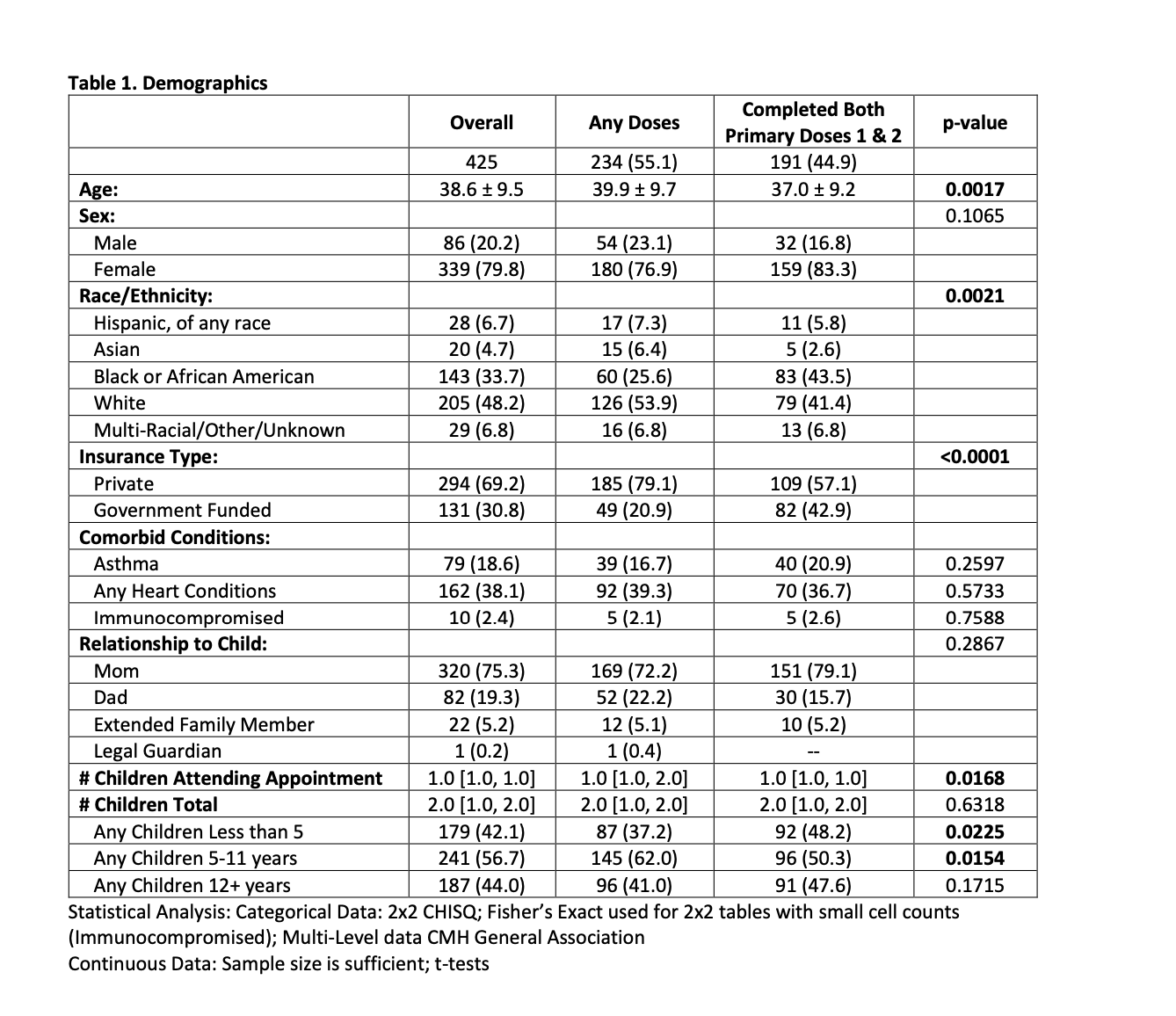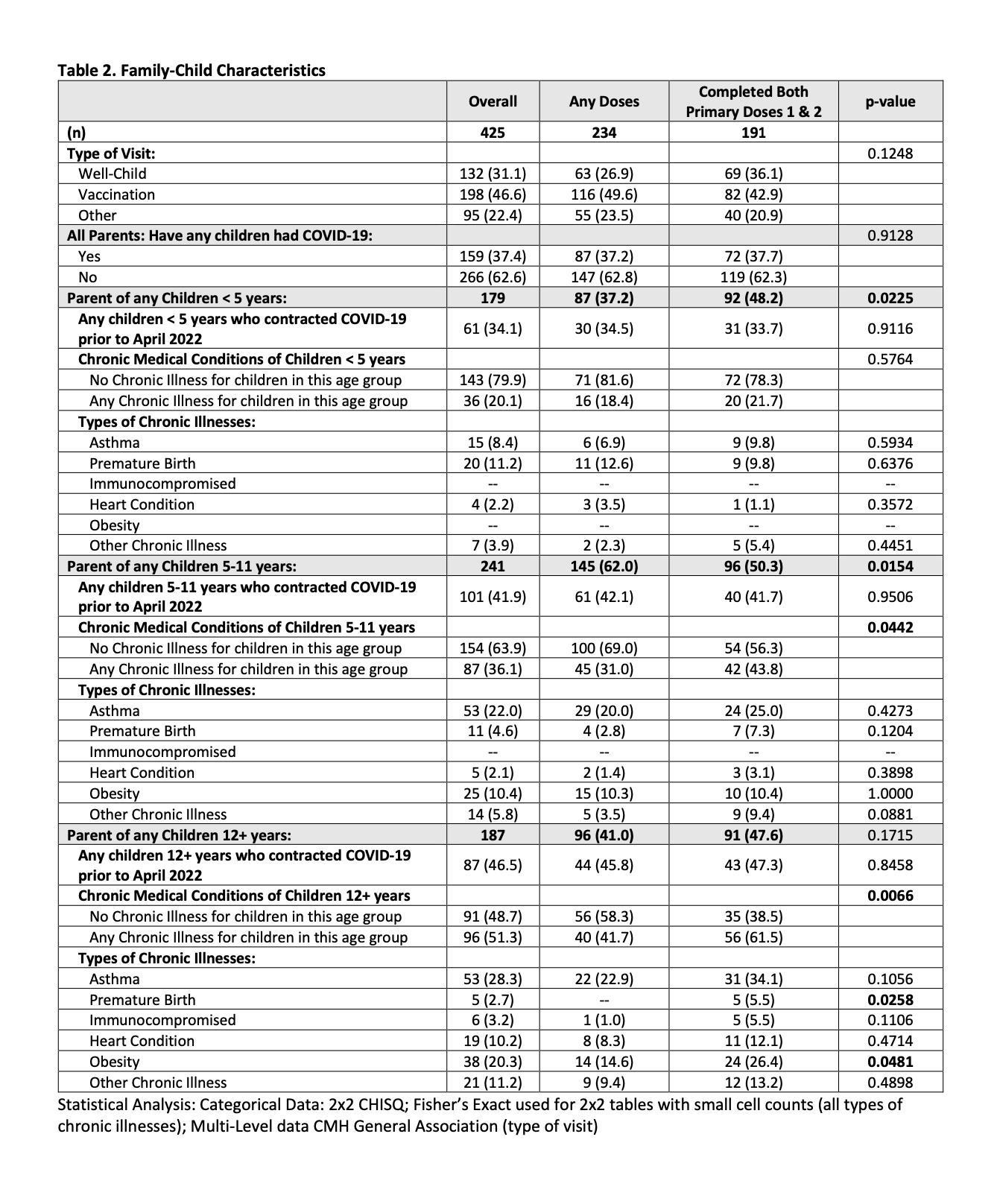Immunizations/Delivery
Immunizations/Delivery 1
606 - Administration of COVID-19 vaccination to adult caregivers in pediatric outpatient clinics: A vaccination cocooning project
Saturday, April 29, 2023
3:30 PM - 6:00 PM ET
Poster Number: 606
Publication Number: 606.224
Publication Number: 606.224
Lauren Rostkowski, University of Florida College of Medicine, Gainesville, FL, United States; molly posa, university of florida, newberry, FL, United States; Stephanie L. Filipp, University of Florida, Gainesville, FL, United States; Maria Kelly, University of Florida College of Medicine, Gainesville, FL, United States

Lauren Rostkowski, BS (she/her/hers)
Medical Student
University of Florida College of Medicine
Gainesville, Florida, United States
Presenting Author(s)
Background: The COVID-19 virus has threatened the health and well-being of millions of people. Vaccination against COVID-19 is safe for patients greater than 6 months of age, and reduces virus infectivity and severity. One strategy for protecting children unable to be vaccinated is cocooning, a concept that protects at-risk individuals by vaccinating adult caretakers (ACs).
Objective: This study’s purpose is to evaluate the effectiveness of offering the COVID-19 vaccine to ACs within their child’s pediatric office. We hypothesize that AC characteristics and child COVID-19 history and comorbid conditions will impact the AC’s decision to receive COVID-19 vaccinations at their child’s pediatric office.
Design/Methods: This study is a retrospective chart review that identified ACs greater than 21 years of age who received a COVID-19 vaccine at one of six UFHealth pediatric offices between March 2021-April 2022. Investigators collected demographic information of the AC and the corresponding child. Descriptive statistics were computed for familial characteristics, and comparisons were made between those ACs who completed their primary two-dose series at UF pediatric clinics versus those who received other doses.
Results: The AC sample was predominantly female (79.8%), parents (75.3% mothers, 19.3% fathers), Caucasian (48.2%), Black (33.7%), and privately insured (69.2%). Few were immunocompromised (2.4%), though many had asthma (18.6%) or heart conditions (38.1%). Those who completed both primary doses had higher rates of children less than 5 years compared to those who did not (48.2%, 37.2%; p-value: 0.0225). ACs completing both primary doses were also younger compared to their counterparts (37.0, 39.9 years; p-value: 0.0017), with double the rate of government-funded insurance (42.9%, 20.9%; p-value: < 0.0001), and significantly different racial/ethnic distribution (p-value 0.0021). Few differences were seen in rates of COVID-19 infection and chronic conditions among children.
Conclusion(s): Within the study period, 425 ACs received at least one COVID-19 vaccine from their child’s primary care clinic, indicating that ACs readily accepted this opportunity for vaccination. Vaccine recipients were predominantly female, a parent, and either Caucasian or Black. ACs who had children younger than 5 were more likely to receive their first two doses at their child’s clinic than those who had children older than 5. We believe these results reflect the convenience of offering AC vaccines at pediatric healthcare clinics because of the high frequency of well-child checks within the first 5 years of life.


